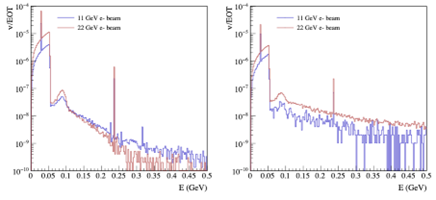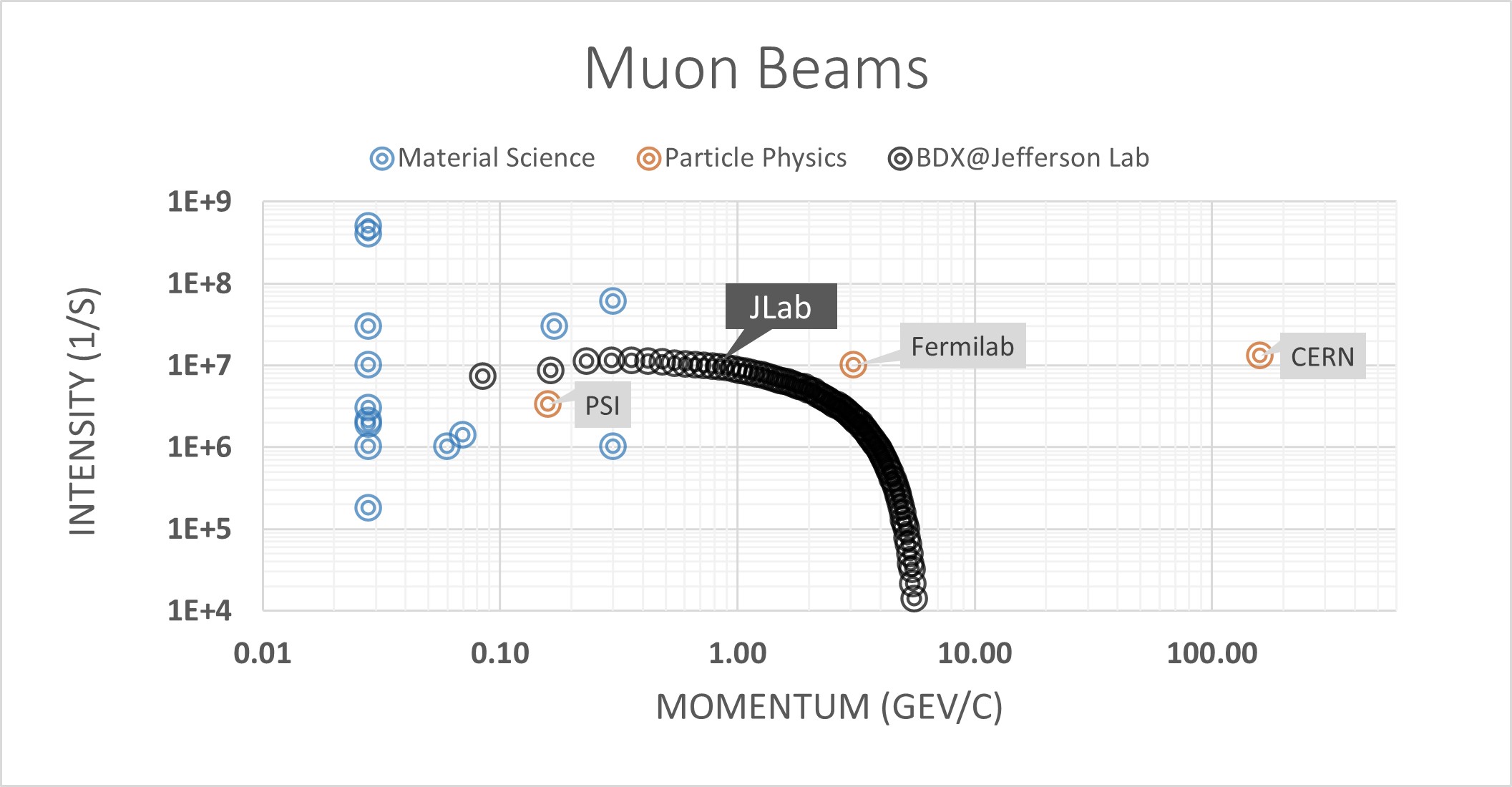-
Jefferson Lab is known for its comprehensive scientific program in hadron physics using the up-to-12 GeV electron beam from CEBAF, primarily involving fixed-target experiments. The interaction of the high-intensity electron beam with the dump generates intense secondary beams of muons, neutrinos, neutrons, and hypothetical dark matter particles. The potential for a light dark matter beam is being explored by the PAC-approved Beam Dump eXperiment (BDX). The underground vault planned for BDX could also host additional instrumentation for experiments with secondary beams.
-
Monte Carlo simulations for an 11-GeV beam dumped in Hall A have been published in: M. Battaglieri et al., "Secondary Beams at High-Intensity Electron Accelerator Facilities", Instruments 8, 1 (2024), https://doi.org/10.3390/instruments8010001
Muons:
-
A secondary muon beam with a bremsstrahlung-like energy spectrum extending up to 5 GeV that could yield up to ∼10⁻⁶ μ/EOT (Electrons On Target), corresponding to 10⁸ μ/s for an electron beam current of 50 µA. The muon spatial distribution shows a Gaussian 1-sigma width of 25 cm. The flux was computed on a sampling plane (of 1 m2 area) located 10 m downstream of the beam dump and perpendicular to the primary electron beam beam.
-
In the following figure, panel A shows in blue (red) the muon energy spectrum for a primary 11-GeV (22-GeV) electron beam. Panels B and C show the muon spatial and angular distributions for a primary 11-GeV electron beam.

Neutrinos:
-
A secondary neutrino beam with a typical decay-at-rest (DAR) energy spectrum that could provide up to ∼7 × 10⁻⁵ (~3 x 10-5) ν/EOT when integrated over a 1 m² detector located 10 m above (downstream) of the beam dump. Considering a delivered charge of 10²² EOT per year, the annual neutrino flux would be in the range of 10¹⁸ ν.
-
In the following figure, the neutrino energy distributions are shown off-axis (left panel) and on-axis (right panel) for primary 11-GeV (blue) and 22-GeV (red) electron beams.

Neutrons:
-
The neutron fluxes could be considered also for experimentation.
Hypothetical dark matter particles:
-
The detection of hypothetical dark matter particles is explored by the BDX experiment.
Muon Beam Comparison with other Facilities
The following comparison includes information on the muon beam intensities from different beamlines and experiments at TRIUMF, PSI, the J-PARC muon facility, the ISIS neutron and muon source at RAL, CERN, and Fermilab. Although there are many beamlines for material science, mostly using surface muons with 4 MeV kinetic energy, there are currently only three dedicated muon beam used for particle physics: the SPS/M2 beamline at CERN for the COMPASS experiment, the muon storage ring for the (g-2)μ experiment at Fermilab, and the PiM1 beamline for the MUSE experiment at PSI. There are several more planned beamlines for particle physics, e.g., at JPARC for a (g-2)μ experiment, which are not included.

While most muon beams have a small momentum bite, the BDX facility will provide muons in a large range of momenta.
